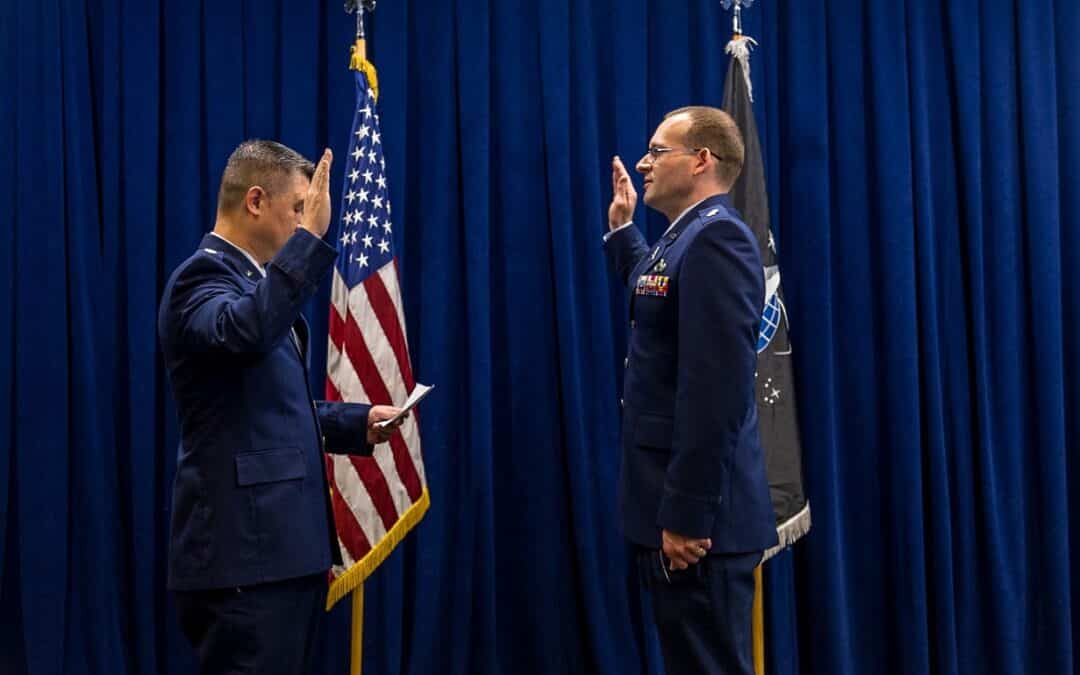By Amanda Huffman
Guest Blogger
The U.S. Space Force is celebrating its fourth birthday on December 20, 2023. Since its creation, the Space Force has grown into its new role as its own, separate service. It started with a few key leaders before transferring over servicemembers from all branches of the military. The U.S. Space Force now has its own song, motto, and mission. And while it is the smallest branch of the military, it is making an impact in securing our national interests and keeping us safe.
In September, the U.S. Space Force announced its new mission statement to: “Secure our Nation’s Interest In, To, and From Space.” Joshua Carlson, author of Spacepower Ascendant, shared in his book how the U.S. Space Force needs to adjust its focus and highlight how this change of mission not only is succinct, but it is more in line with other branches mission statements. “A clear mission that can easily be repeated,” said Carlson on LinkedIn. “Clearly, the new mission statement is a significant improvement. This is part of the larger CSO goal of improving the Guardian Spirit. A step in the right direction — well done.”
The U.S. Space Force has also established a ogo, new uniforms, and characteristics of a Guardian. And in case you didn’t know, “Guardian” is the term the U.S. Space Force selected to call each of its members, just as the Air Force calls its members Airmen. The U.S. Space Force selected the delta as its logo. And while many people believe this symbol was stolen from popular sci-fi movies and TV shows, it actually predates the creation of these shows and is found in the first space entities. In fact, sci-fi stole the delta from real-world space programs, not the other way around.
U.S. Space Force Personnel
Today, the U.S. Space Force is made up of over eight thousand active servicemembers alongside approximately eight thousand civilian support members and thousands of support contractors.
The process to transfer Airmen, Soldiers, Marines, and Sailors from their original branches to the Space Force was a multi-year operation, beginning space-related career fields within the Air Force, then adding additional career fields such as Acquisitions, Intel, etc. from the Air Force, and finally extending to other branches.
Currently, the U.S. Space Force does not have a National Guard or Reserve component. This has been an issue in front of the U.S. Congress, but has not yet progressed to the creation of either of these support entities. The main challenge has been entities within the Air National Guard that support the U.S. Space Force’s mission and, had these Airmen been on Active Duty, they would currently serve in the Space Force. Since the Space Force does not have its own National Guard, these positions stayed within the Air National Guard. This may change in the future but currently there are no plans to create either a National Guard or Reserve Component for the Space Force.
Joining the U.S. Space Force
Today, the U.S. Space Force is recruiting new Guardians. They still attend Air Force Basic Military Training (BMT) but, as of June 2022, they are trained by Space Force Military Training Instructors separate from their Air Force colleagues. The main difference between the Air Force BMT and the new Space Force BMT is 21 hours of instruction specific to the Space Force. To become a Space Force officer you must attend either the U.S. Air Force Academy or Air Force ROTC. Upon graduation you are designated into the U.S. Space Force.
The U.S. Space Force operates from six locations: Los Angeles Air Force Base (AFB), Patrick Space Force Base (SFB), Buckley SFB, Peterson SFB, Schriever SFB, and Vandenberg SFB — bases located in just three states: California, Florida, and Colorado. However, there are satellite support units across the country.
And while plenty of people still don’t know that the U.S. Space Force exists, it has continued to grow. In 2023, Space Force supported more than 200 satellite launches, while monitoring and collecting data from the thousands of satellites circling the globe.

Amanda is a military Veteran who served in the Air Force for six years as a Civil Engineer who served on a combat deployment with the Army in Afghanistan. She traded in her combat boots for a diaper bag to stay home with her two boys and follow her husband’s military career in the Space Force. Amanda is the host of the Women of the Military podcast. There she shares the stories of women who have served or are serving in the military. The podcast has over 200 episodes and over 100K downloads. Amanda is also an author and has published two books. Her first book, Women of the Military tells the stories of 28 military women who served in the military. Her second book, A Girl’s Guide to Military Service, is the IBPA Benjamin Franklin Gold Winner for Teen Non Fiction. It is a guide for high school girls considering military service to help them build a strong foundation for their future career. She also works as a freelance writer and has been featured in a number of military publications including The War Horse, Military.com, Military Families Magazine, Clearance Jobs, Military Spouse Magazine, and more.



